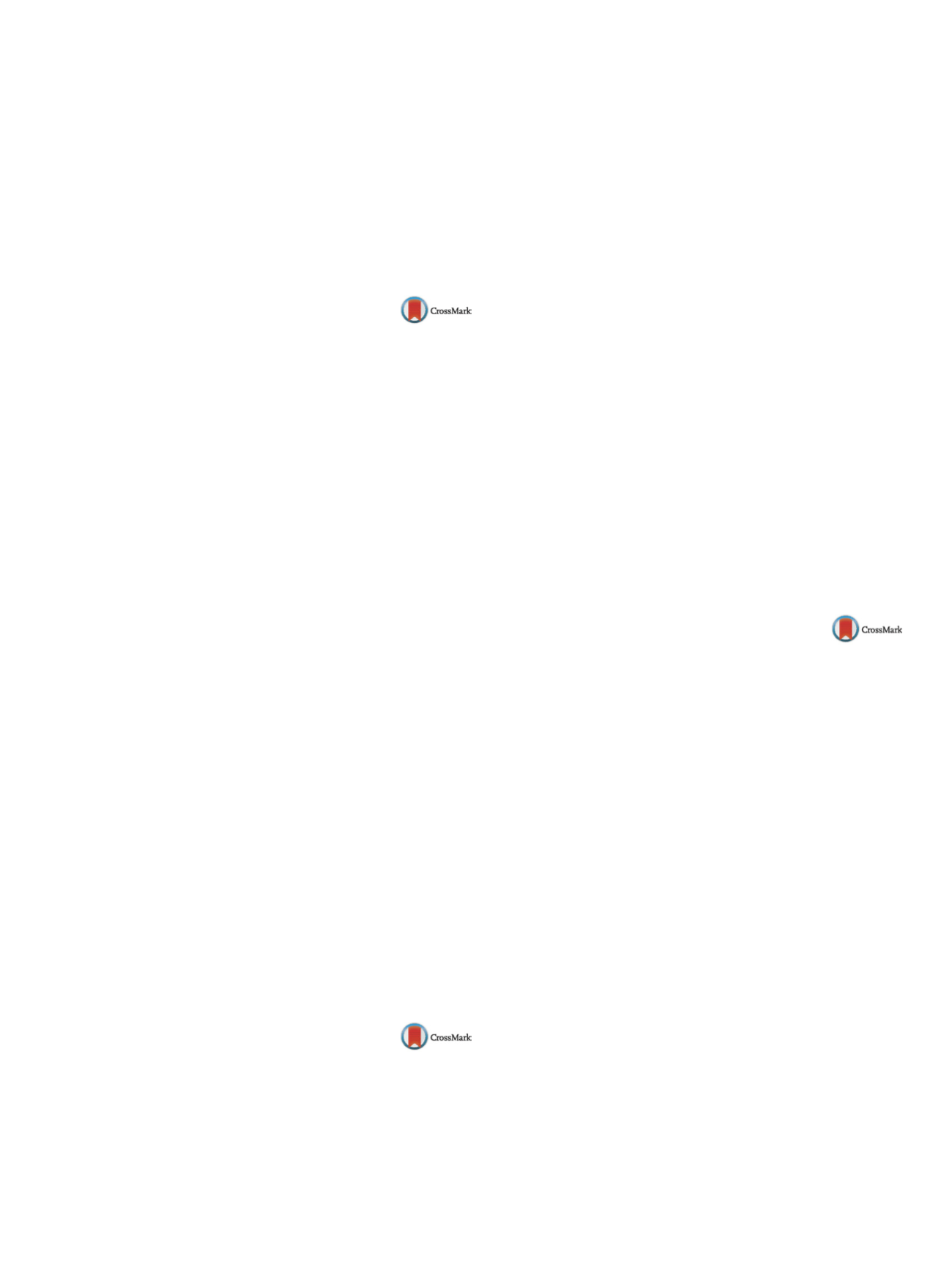

25th European Congress of Psychiatry / European Psychiatry 41S (2017) S106–S169
S119
Similarly, the average number of suicide attempts among patients
with cannabis addiction was significantly higher than the group
without cannabis addiction.
Conclusions
Aggressive drug abuse treatment immediately after
a first psychiatric hospitalisationmight decrease rates of recurrence
and new cases of cannabis use disorder in the course of bipolar
disorder.
Disclosure of interest
The authors have not supplied their decla-
ration of competing interest.
http://dx.doi.org/10.1016/j.eurpsy.2017.01.1908EW0040
The role of micrornas in regulating
redox modulation in bipolar disorder
H. Kim
1 ,∗
, K. Tyryshkin
1, N. Elmi
1, V. Oliviera
2, A. Andreazza
3,
H. Feilotter
11
Queen’s University, Pathology and Molecular medicine, Kingston,
Canada
2
University of Toronto, Department of Psychiatry, Toronto, Canada
3
University of Toronto, Departments of Pharmacology and
Psychiatry, Toronto, Canada
∗
Corresponding author.
Introduction
Alterations in redox modulation are consistently
reported in bipolar disorder (BD). MicroRNAs are targeted regu-
lators of gene expression.
Objectives and aims
We aimed to examine if microRNAs that tar-
get redox modulators can discriminate between BD and healthy
controls.
Methods
Data from brains of individuals with and without BD
were obtained fromArray Collection datasets. MicroRNAs targeting
redoxmodulators were assessed for their ability to discriminate BD
from the control group using machine-learning algorithms. Meth-
ylation of microRNAs, expression of their transcription factors and
redox targets were assessed with ANCOVAwith FDR correction. For
validation, we acquired plasma samples belonging to 2 families of
individuals with and without BD (
n
= 9). Plasma microRNAs were
sequenced using the Ion Total RNA Sequencing Kit (Thermo Fisher
Scientific), and microRNAs identified from the in silico analysis
were examined in the validation dataset.
Results
We identified 5 miRNAs (hsa-miR-299, hsa-miR-125a,
hsa-miR-145, hsa-miR-30b, hsa-miR424) thatwere common in two
of the four in silico datasets. Target genes glutathione peroxidase 4,
ATP5A1, ATP5G1, NDUFS1, NDUFC2, and catalase were expressed
at different levels between BD and the control group. Further-
more, our results showed that transcription factors CTCF and USF1
might control the expression of hsa-miR-145, while methylation
differences were not found. Finally, hsa-miR-30b was significantly
increased in the plasma of patients with BD compared to controls
in the validation experiment.
Conclusions
Our study demonstrates that microRNAs may have
an important role in the initiation of redox changes in BD.
Disclosure of interest
The authors have not supplied their decla-
ration of competing interest.
http://dx.doi.org/10.1016/j.eurpsy.2017.01.1909EW0041
Co-morbid obsessive-compulsive
disorder and bipolar disorder in
highly endogamous population:
Which came first?
A. Bener
Istanbul Unıversity, Biostatistics and Publıc Health, Istanbul, Turkey
The aim of this study was to determine the prevalence of
co-morbidity with obsessive-compulsive disorder (OCD) among
bipolar disorder (BD) patients in order to assess the impact of
OCD on the socio-demographic and clinical features of patients
in a highly endogamous population. A cohort study was carried
out on 396 patients enrolled between November 2011 to October
2013. We employed the WHO Composite International Diagnos-
tic Interview (WHO-CIDI) and Structured Clinical Interview for
Diagnostic and Statistical Manual of Mental Disorders, Fourth
Edition-IV/Clinical Version for diagnoses, the Yale-Brown Obses-
sive Compulsive Scale SymptomChecklist for scoring OCD. Patients
were grouped in BD patients with OCD (BD-OCD) and BD patients
without OCD.
Groups were compared for socio-demographic and clinical vari-
ables. There were no significant differences for age, gender, BMI,
andmarital status, between BD patients with and without OCD. We
found significant differences in level of education (
P
= 0.022), occu-
pation status (
P
= 0.025), household income, (
P
= 0.049), cigarette
smoking (
P
= 0.038), sheesha smoking (
P
= 0.007), and prevalence
of consanguinity (
P
= 0.036) among these groups. Number of hospi-
talizations and Young Mania Rating Scale score were not different
among BD patients with or without OCD whereas there were sig-
nificant differences in Hamilton-Depression score, Clinical Global
Impression-BD Score, duration of illnesses, and Global Assessment
of Functioning (GAF). Also specific phobia, somatization, depres-
sion, mania, any mood disorder, oppositional defiant disorder,
ADHD and personality disorder were more common in BD than
OCD–BD group. This study confirms that BD-OCD is a common co-
morbidity, largely under-recognized in clinical practice, whichmay
significantly change BD presentation and outcome.
Disclosure of interest
The author has not supplied his/her decla-
ration of competing interest.
http://dx.doi.org/10.1016/j.eurpsy.2017.01.1910EW0042
A comparison between manic patients
with or without antipsychotic
continuation treatment: Data from a
12-months follow-up study at mood
disorder unit of San Raffaele–Turro
hospital
S. Brioschi
1 ,∗
, D. Delmonte
1, C. Locatelli
1, L. Franchini
1,
B. Barbini
1, C. Colombo
21
IRCCS San Raffaele-Turro, Division of Neuroscience, Milano, Italy
2
Vita-Salute University, San Raffaele Hospital, Division of
Neuroscience, Milano, Italy
∗
Corresponding author.
Introduction
Several studies suggest that in severe bipolars there
is a long-term benefit in continuing antipsychotic therapy plus a
mood stabilizer also after remission from a manic episode. Nev-
ertheless, the long-term use of antipsychotics is associated with
significant side effects which can interferewith patient global func-
tioning. In this sense, antipsychotics should not be continued unless
the benefits outweight the risks.
Objectives
The present study describes the course of illness
between bipolar patients remitted from a manic episode, in con-
tinuation treatment with or without antipsychotic therapy during
a 12-months follow-up period.
Methods
Cinquante-six bipolars (22 male and 44 female) remit-
ted (Young < 12) froma severemanic episodewere observed during
a 12-months follow-up. According to clinical judge, as continuation
treatment, 21/56 (37.5%) took antipsychotic plus mood stabilizer
(AP +MS); 35/56 (62.5%) took mood stabilizers monotherapy (MS).
During follow-up period YMRS and HAM-D were administered at
6th and 12th month to verify remission.
Results
At the end of follow-up up, 33/56 patients (58.9%) main-
tained remission, 23/56 (41.1%) relapsed (56.5% depressive, 31.4%
manic). The greater number of relapses occurredwithin 6thmonth:
16/56 (28.8%). In AP +MS group 12/21 patients relapsed (57.14%); in


















